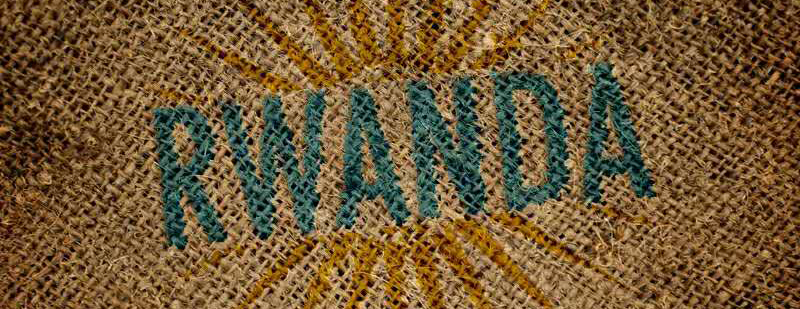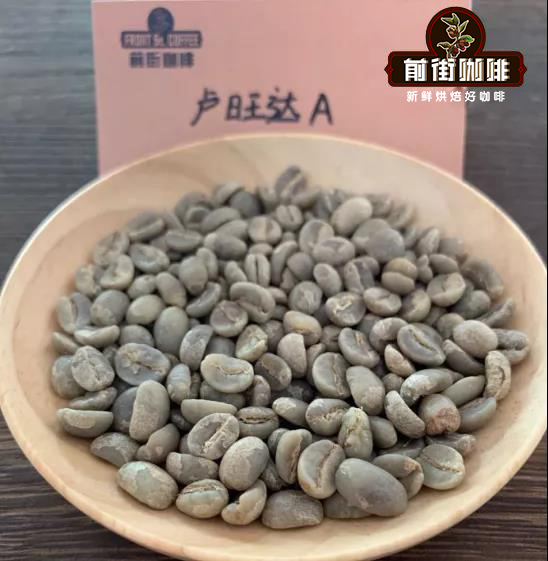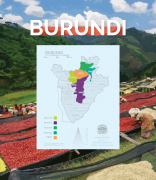Flavor and taste characteristics of Rwandan coffee beans and its historical development what is the "potato defect"
Historical Development of Coffee Bean production in Rwanda | what are the defects in potatoes?
If a coffee bean is described as bright acidity, such as cranberries or grapefruit, floral aromas and sweet herbs such as chamomile, and sweet nuts such as almonds or macadamia nuts. Would you like to try this kind of coffee? So the editor will walk into Rwanda with you today. First, let's take a look at the history of coffee in Rwanda.

Coffee was brought to Rwanda by missionaries in the 1890s, but since the 1930s, production has been occupied and used by the Belgian colonial government: coffee has become a compulsory crop designed to become a cheap commodity that can be sold to the European market. Rwanda gained independence from Belgium in the early 1960s and coffee made economic sense in the early 1990s when it became a major agricultural export. Genocide and the ensuing low market prices have destabilized the industry. However, the shift to professional coffee in 2000 increased the value of coffee to farmers. Since 2003, La Bodega has been working with a grower association called COOPAC, which is only a few years old: it was founded by Emmanuel Rwakagara in April 2001. Originally a member of 110 farmers, COOPAC now represents more than 8000 small farmers and operates more than 50 washing stations. Emmanuel is also responsible for overseeing coffee production on the island of Gishamwana on Lake Kivu. The construction of the first washing station in 2004 ushered in a new era of quality and a new prospect of procurement.

[problems facing]
One of the obstacles that continues to frustrate Rwandan coffee producers and Rwandan coffee lovers is the so-called "potato defect", a local problem in Rwanda, to a lesser extent in neighboring Burundi, Uganda and the Democratic Republic of the Congo. It is caused by the presence of isopropylmethoxypyrazine (IPMP), which may be introduced by a variety of factors (the study has not yet concluded) And usually separated in a single seed, rather than other defects can contaminate a larger percentage or even a large pile, such as mold, phenol or fermentation. The La Bodega test came from coffee with potato defects-examined the affected area very carefully, and although it was almost impossible to prevent it and could not be detected in parchment or raw coffee, we managed to purchase coffee with very low defects.
Rwanda's inland status poses some interesting obstacles to logistics: in order to transport coffee out of the mainland, it needs to be loaded into a truck and transported to the port of Dar es Salaam in Tanzania. This means that coffee is purchased by FOT (free truck) instead of typical FOB (FOB), as well as we take ownership of coffee while it is in the factory, while the first N will be in the port. This adds an additional risk: it takes 5 to 15 days to travel by land to transport the coffee, and additional necessary documents are required when the coffee is loaded into the vehicle for the first time. Once the coffee arrives at the port, more paperwork needs to be exchanged, and it may take some time to book the next available container ship. However, all these complex flows are worthwhile for possibly delicate coffee: bright acidity, such as cranberries or grapefruit, floral aromas and sweet herbs such as chamomile, and sweet nuts such as almonds or macadamia nuts.
Important Notice :
前街咖啡 FrontStreet Coffee has moved to new addredd:
FrontStreet Coffee Address: 315,Donghua East Road,GuangZhou
Tel:020 38364473
- Prev

The influence of Zhuoyue Cup on Rwanda Coffee Industry Flavor characteristics of washing treatment of Rwandan Coffee beans
The 2008 excellent Cup encourages coffee farmers to circulate and promote the ranks of high-quality beans. Before the introduction of the excellent cup, the vast majority of coffee in Rwanda was disorderly, there was no obvious difference in quality, and there was no specific description of the flavor characteristics of high-quality beans. After the introduction of the Excellence Cup, international experts began to record and discuss Jean Lew in depth.
- Next

History and Culture of Coffee beans in Burundi what is the mode of transportation and sales of coffee agricultural production and development
Coffee was introduced to Burundi by Belgian colonists in the 1920s, when it was a forced crop: farmers were required to plant a government-mandated number of coffee trees, of course, with little for their labor or land. Once the country gained independence in the 1960s, the coffee industry (and others) was privatized, depriving control from the government unless research was necessary.
Related
- Detailed explanation of Jadeite planting Land in Panamanian Jadeite Manor introduction to the grading system of Jadeite competitive bidding, Red bid, Green bid and Rose Summer
- Story of Coffee planting in Brenka region of Costa Rica Stonehenge Manor anaerobic heavy honey treatment of flavor mouth
- What's on the barrel of Blue Mountain Coffee beans?
- Can American coffee also pull flowers? How to use hot American style to pull out a good-looking pattern?
- Can you make a cold extract with coffee beans? What is the right proportion for cold-extracted coffee formula?
- Indonesian PWN Gold Mandrine Coffee Origin Features Flavor How to Chong? Mandolin coffee is American.
- A brief introduction to the flavor characteristics of Brazilian yellow bourbon coffee beans
- What is the effect of different water quality on the flavor of cold-extracted coffee? What kind of water is best for brewing coffee?
- Why do you think of Rose Summer whenever you mention Panamanian coffee?
- Introduction to the characteristics of authentic blue mountain coffee bean producing areas? What is the CIB Coffee Authority in Jamaica?

